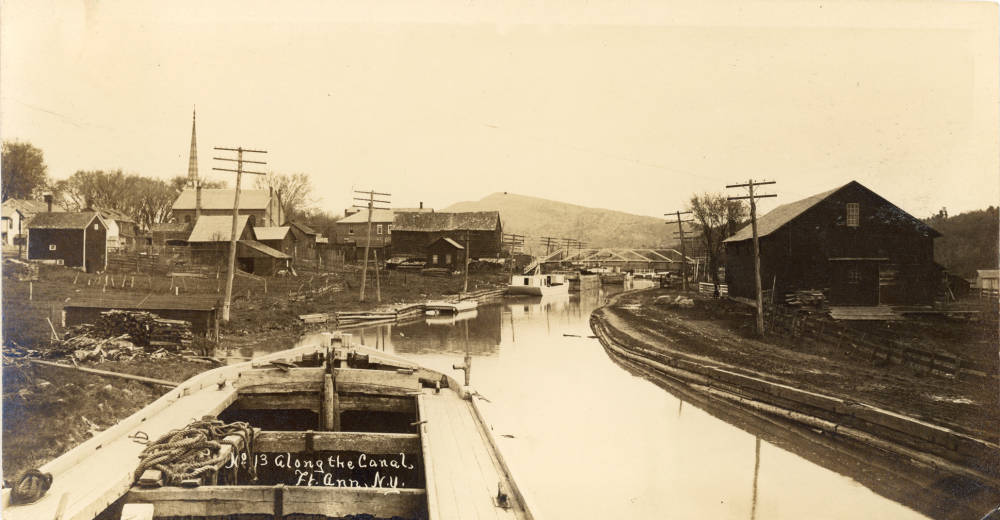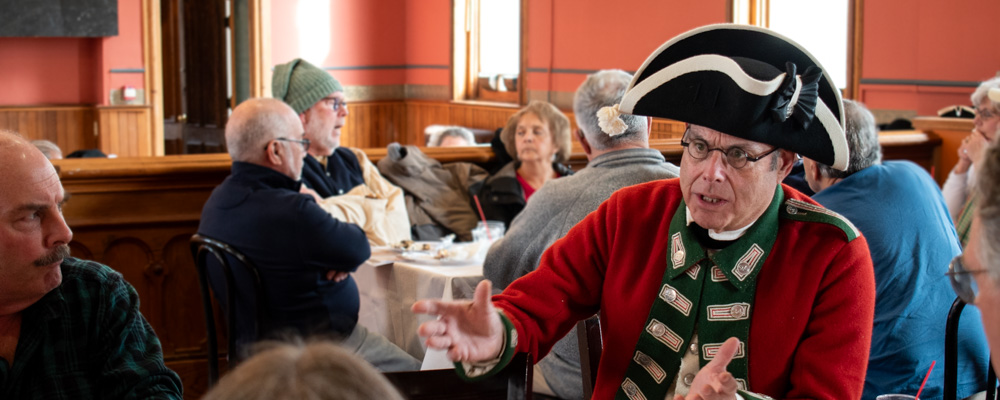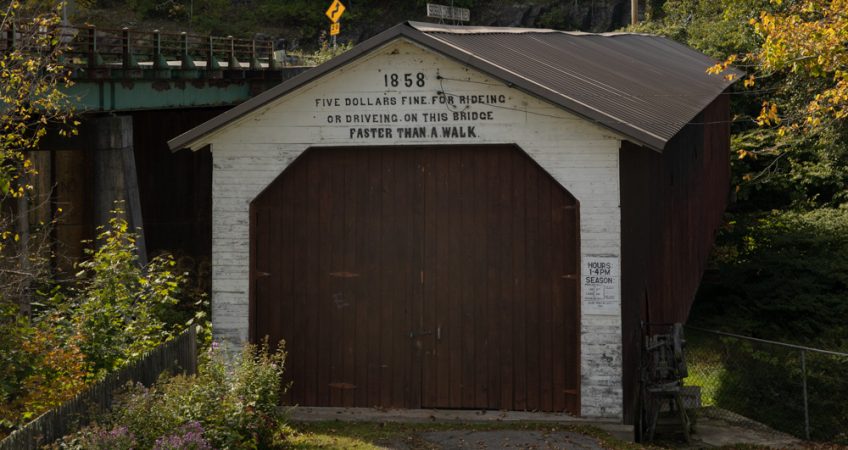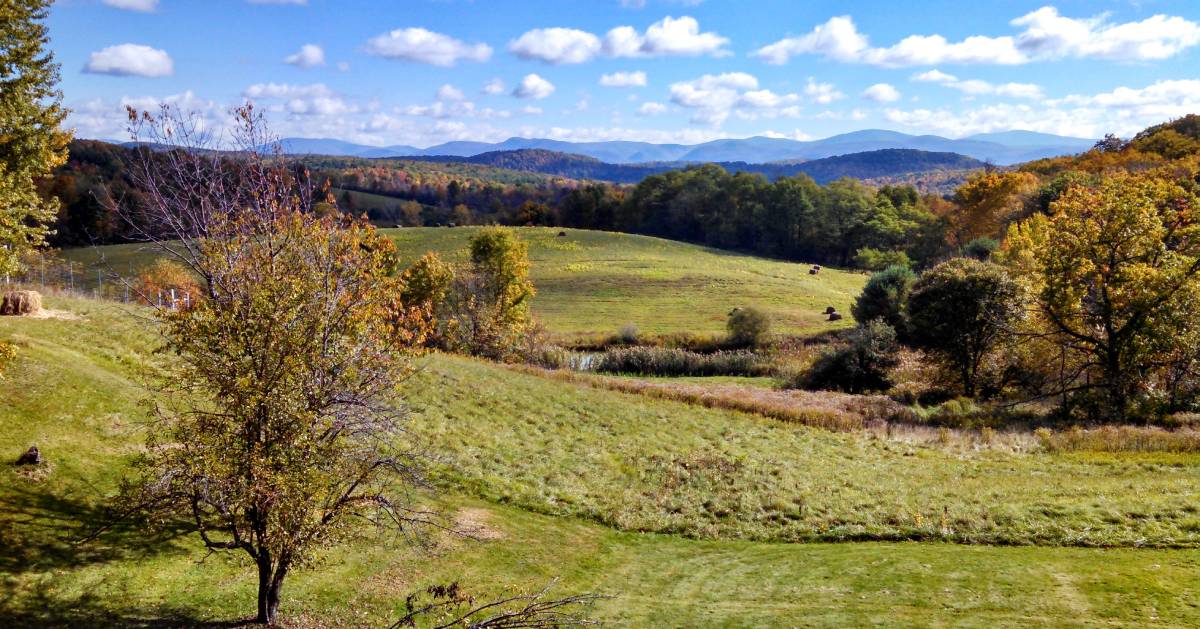Imagine the creak of a wooden waterwheel turning in the Battenkill River, or the hiss of a steam locomotive pulling into a bustling depot.
Between 1760 and 1914, Washington County transformed from a patchwork of quiet farmland into a vibrant corridor of innovation, industry, and immigration. From slate quarries to shirt factories and canals to covered bridges, the Industrial Revolution not only changed how people worked, it reshaped the very fabric of life here.
Today, that legacy lives on in our towns, trails, museums, and stories.
From Forest to Factory
Long before assembly lines and mechanized tools, Washington County’s economy ran on natural resources and human ingenuity. In 1765, a sawmill was built in Fort Ann, the first of many water-powered enterprises that would come to define the region.
Powered by the area’s rushing rivers and abundant timber, sawmills and gristmills popped up across the county, turning raw materials into lumber and flour for local and regional markets.
The real spark came in 1804, when Job Whipple and William Mowry established New York State’s first cotton mill in Greenwich along the Battenkill River. Utilizing a “putting-out” system, they sent yarn to local farm wives who wove it into cloth at home, a blend of traditional craft and modern commerce that helped the area become affectionately known as “Whipple City.” The Mowry-Whipple Mill closed in 1845, becoming a flax mill during the 1850s, and years later, the Eddy Plow Works, which you can still see along the river today.
That same spirit of invention led Greenwich’s Perry Miller to create one of the nation’s earliest cast-iron plow factories, further anchoring Washington County’s role in early American manufacturing! From lime kilns to iron forges, the seeds of industry had taken root.
A Water Highway That Changed Everything

By the 1820s, Washington County’s early industries were primed for expansion, but they needed a better way to move goods. Enter the Champlain Canal. Completed in 1823, this 63-mile waterway connected Fort Edward to Lake Champlain and opened a direct shipping route between New York City and Canada. Afterward, towns along the canal (including Whitehall, Fort Ann, and Fort Edward) experienced a dramatic boom.
Warehouses and boatyards sprouted up, local farmers could ship their flour and lumber faster and farther, and heavy goods like iron ore and slate could now reach major markets!
Whitehall, situated at the canal’s northern terminus, became a critical transportation hub, often referred to as the “Gateway to the North.” Today, visitors can still see remnants of that canal-era prosperity. Lock 12 in Whitehall is fully operational and surrounded by 19th-century buildings that hint at its storied past.
Pictured: 1903 Postcard: Along the Canal, Fort Ann, NY.
[Champlain Canal Stories – NY Heritage Digital Collection]
The Iron Horse Arrives, Redefining Connection
If canals were the veins of early commerce, railroads became the arteries of the Industrial Age.
In 1848, the first rail line reached Whitehall, ushering in an era of year-round, high-speed transport. Within decades, the Albany Northern Railroad reached Salem, while the Rutland & Washington Railroad carved a path through Granville and linked local quarries with the broader Hudson Line.
Railroads didn’t just move freight, they moved people and ideas. Whitehall’s railyard buzzed with activity and jobs, and lines like the Greenwich & Johnsonville Railroad connected even the most rural villages to urban centers. Electric trolleys soon followed, with the Hudson Valley Railway running daily passenger service by 1906.
Today, you can visit the beautifully restored Cambridge Depot, a proud relic of this transformative era. Once a bustling hub of travelers and goods, it now hosts community events and features displays of the town’s railroad heritage, inviting modern visitors to reflect on the journeys that shaped their communities.
In Fort Edward, the Delaware and Hudson Railroad depot built in 1900 remains an active hub for travel and activity, serving daily Amtrak travelers and visitors to Evergreen Bicycle Works, located inside.
Digging Deep: Slate, Textiles, and the Boom of Local Industry
With more modern transportation in place, Washington County entered a true industrial boom.
The hills of Granville and Hampton revealed vast deposits of slate, and by the 1850s, immigrant laborers—first Welsh, then Irish, Polish, Hungarian, and Italian—arrived in waves to quarry, cut, and ship the valuable stone.
The area quickly gained a reputation as the “Slate Capital of the World,” producing rare red slate found nowhere else. These quarries transformed the landscape into terraced pits and built entire neighborhoods, like Granville’s “Little Wales,” where row houses and ethnic boarding homes still stand as quiet markers of a once-booming industry.
The Slate Valley Museum, located in a former granary, brings this story to life with tools, photos, and oral histories that honor the immigrant hands who shaped the valley.
Meanwhile, the textile industry continued to grow. Greenwich’s Pleasant Vale Union Mill and the Dunbarton flax mill harnessed the Battenkill’s power to create woolens, flax, and knit goods. In Whitehall, silk mills flourished, and in Salem, the Manhattan Shirt Company employed dozens to sew men’s garments. Many of these women workers, earning modest pay in long hours, played a vital role in household economies. The very building that once housed the Manhattan Shirt factory in Salem still stands today, repurposed as the New Collar Goods furniture workshop, a lasting nod to industrial prosperity.
Agriculture, too, embraced the industrial age! Dozens of cheese factories processed milk from Washington County’s growing dairy farms, and cider mills turned apples into tangy vinegar and sweet drinks.
In Fort Edward, the lumber trade gave way to paper mills, and by 1900, the village had become a manufacturing center for International Paper. The large brick mill buildings still dominate the landscape along the canal, and many are now home to Irving Tissue’s Fort Edward operations.
Pictured: An early 1900’s postcard featuring International Paper in Fort Edward, now home to Irving Tissue.
The Human Side of Industry: Labor, Reform, and Identity
The rise of industry transformed more than just buildings and businesses, it reshaped the lives of Washington County’s people. Immigrants brought not only their labor but also their traditions, languages, and faiths. Villages became cultural mosaics. Catholic churches sprang up beside Protestant ones, and ethnic clubs formed to provide community and mutual aid.
Working conditions, however, were often harsh. Slate workers faced dangerous conditions in the quarries, and women and children in factories endured long hours for low wages. These challenges gave rise to early labor organizing. Slate workers were among the first to unionize, staging strikes in the late 1800s for better wages and safety—a story explored in depth at the Slate Valley Museum’s “Slate, Strikes, and Unions” exhibit.
One of the most powerful voices to emerge from this era was Susan B. Anthony. Raised in Battenville, where her father managed a cotton mill, Susan worked as a young girl winding spools.
She saw how women’s wages were given directly to their fathers or husbands, which sparked her lifelong fight for women’s rights. Her childhood home, a Federal-style brick house still standing near the Battenkill, is being restored as a historic site that will one day invite visitors to walk in the footsteps of this iconic reformer.
Legacies in Brick, Stone, and Timber: A County Built to Last

The Industrial Revolution left a visible and lasting legacy on Washington County’s landscape.
Canal paths, stone locks, and railbeds shaped the layout of entire towns. Covered bridges, like the 1858 Shushan Covered Bridge, now preserved as a museum, offered a durable and elegant passage across the Battenkill. In fact, Washington County boasts more covered bridges than any other in New York State, including Rexleigh and Eagleville, where you can still cross the river as travelers did over a century ago!
Naturally, public buildings flourished as well. Gilded Age prosperity funded ornate libraries, schools, and courthouses. In Cambridge, St. Luke’s Episcopal Church was adorned with Louis Comfort Tiffany’s stained-glass windows. And towering above Whitehall is Skene Manor, a stone mansion built in 1874 by Judge Joseph Potter—now a museum and tea room that lets visitors savor 19th-century opulence with a view of the canal below.
Even everyday structures like worker housing carry stories. On Church Street in Granville, rows of slate-roofed homes once rented by quarry companies still line the street, a testament to the people who built Washington County with their hands and hope.
Rediscovering Washington County’s Industrial Heart
From historic train depots to quiet canal trails, Washington County invites you to experience the story of America’s Industrial Revolution up close. Whether you’re exploring the Slate Valley Museum, crossing a covered bridge, or standing beside the same lock that floated barges in 1823, you’re part of a living legacy.
This isn’t just history on display—it’s heritage in motion. Come walk the trails, visit the towns, and discover how Washington County helped build a nation.
Plan your visit today and explore the places where innovation met perseverance, and where the past is never far from view.








